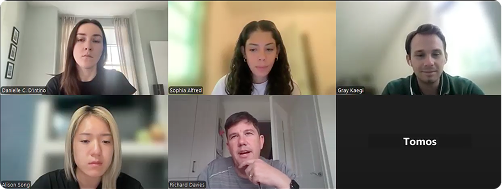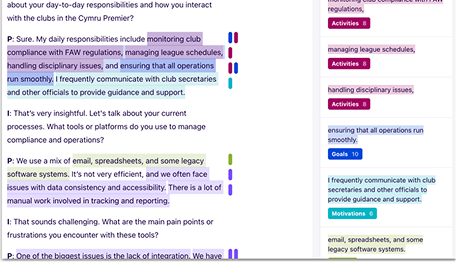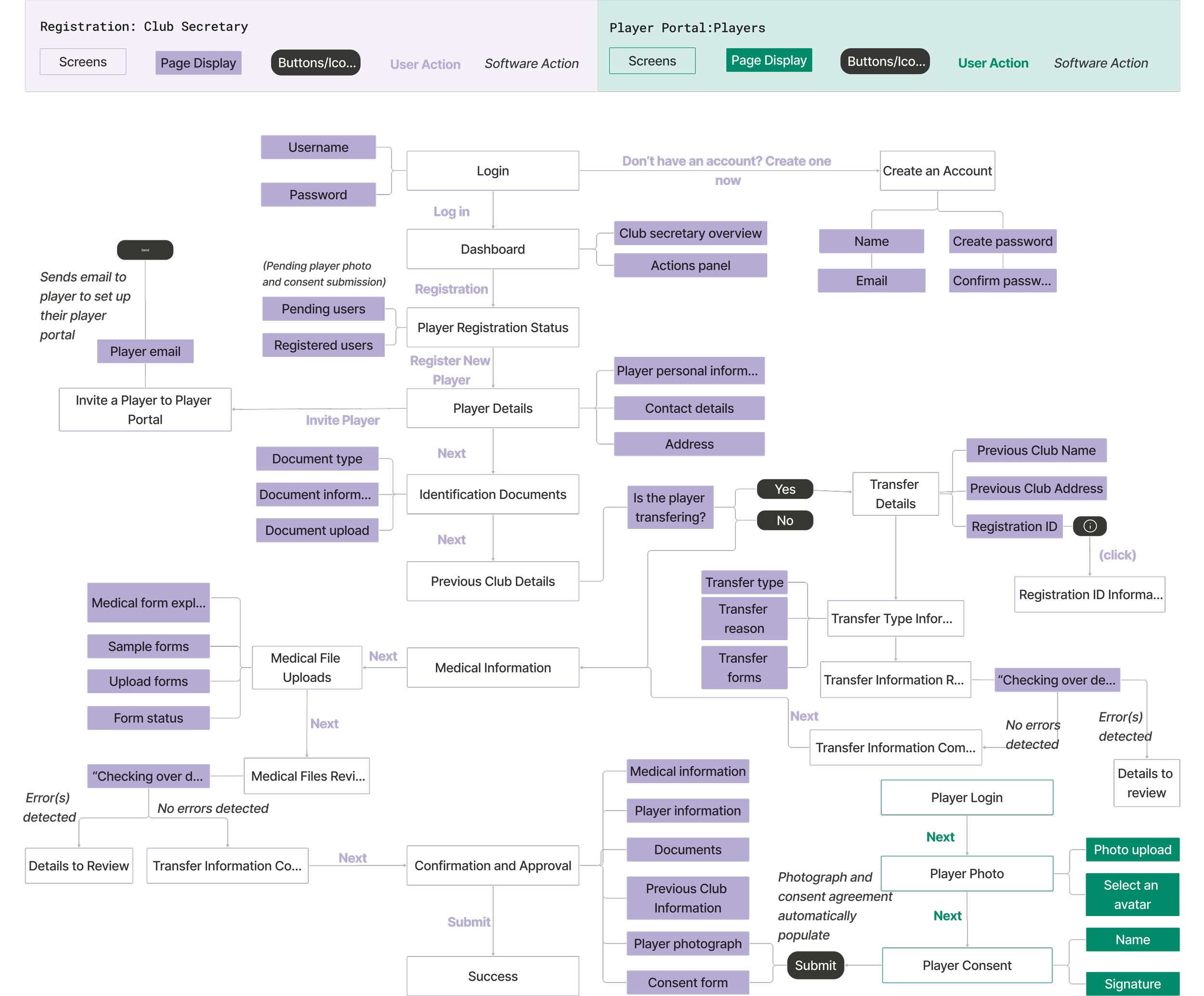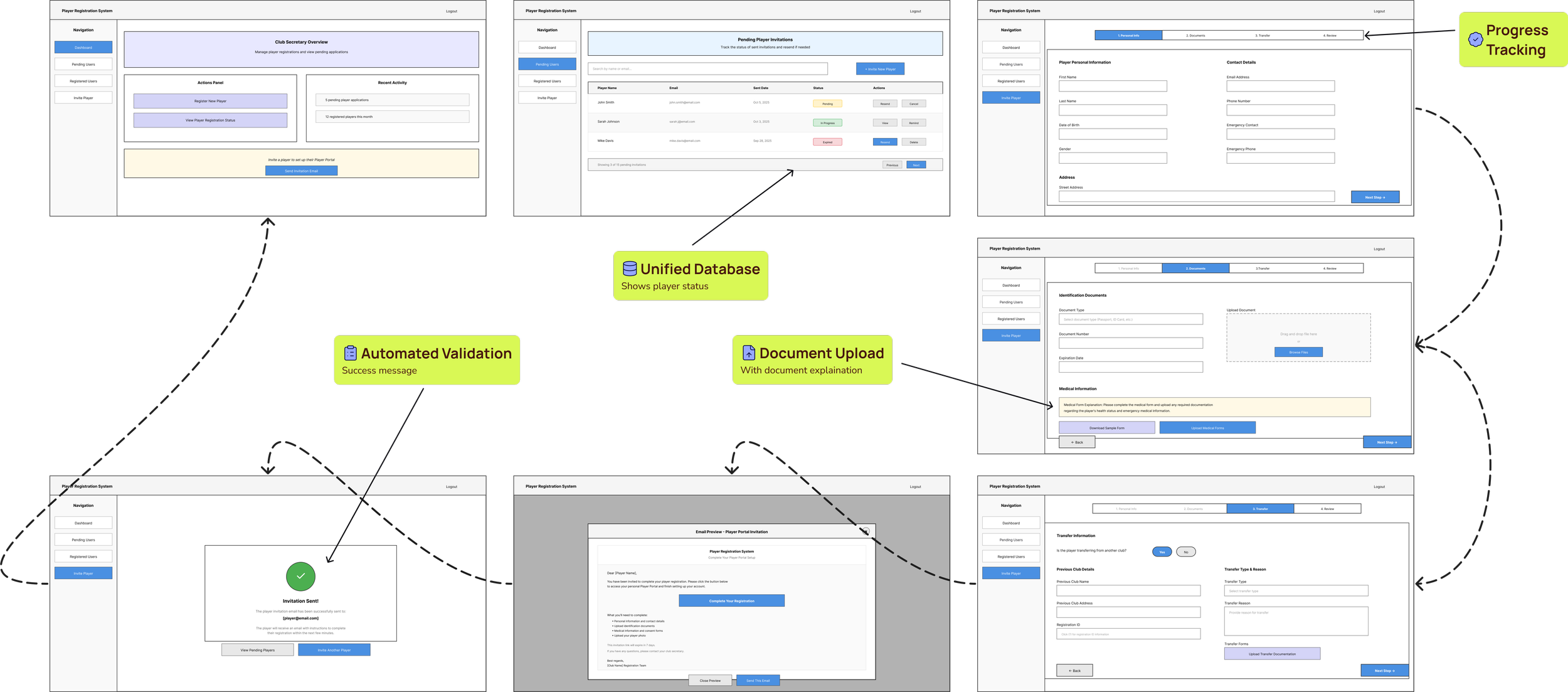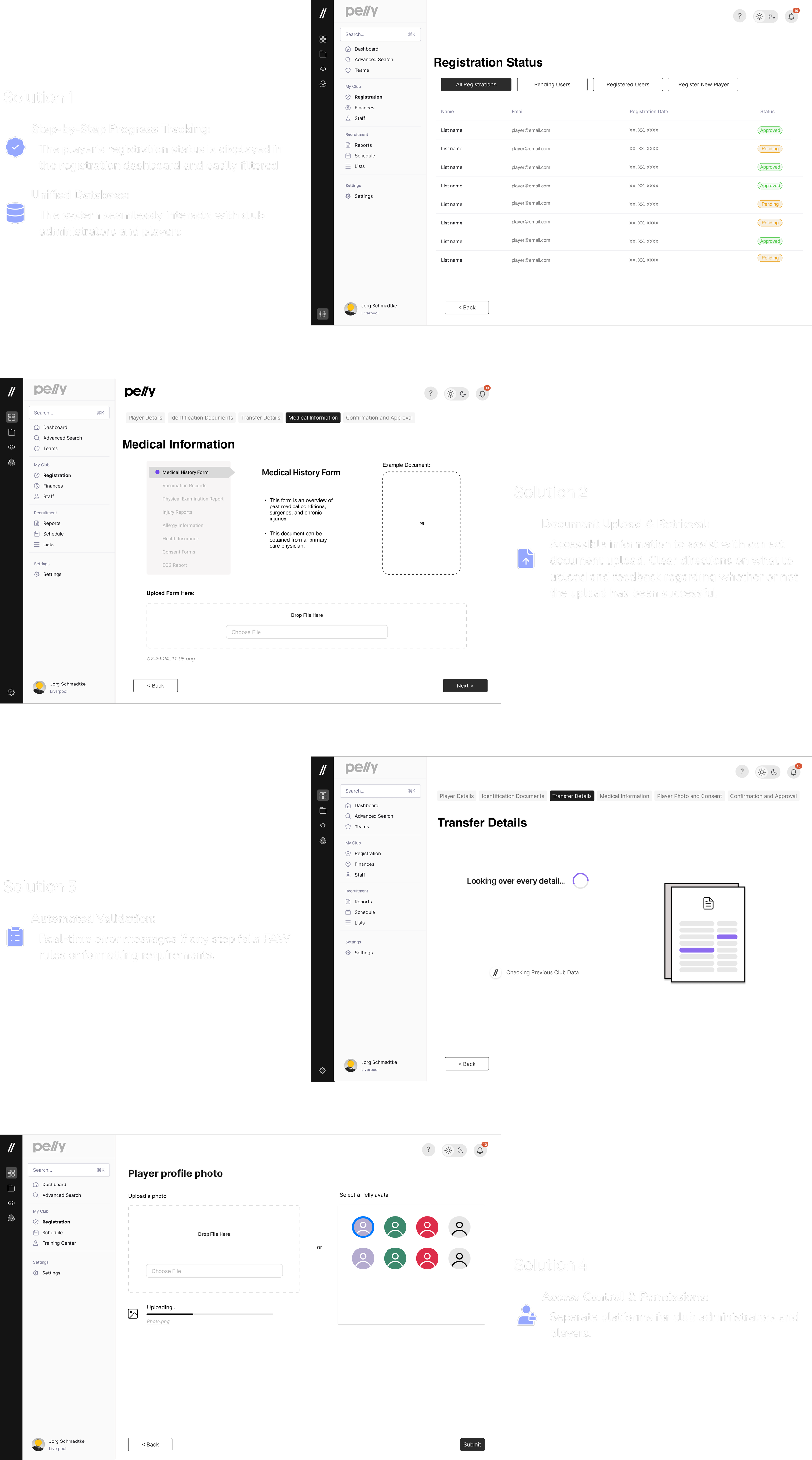Management System for Football Recruitment Operations
Project TypeCoursework: Client Project, Tufts University
May 2024 - August 2024
TimeLineRoleProject Manager, UI/UX Designer
Figma, Comparative Analysis, User Research Wireframes, Prototyping, Usability Testing
Tools and MethodsWhat is Pelly?
Pelly is a Wales-based SaaS startup focused on creating an information management platform tailored for mid-level professional football clubs.
The platform aggregates data sources, supports the creation and management of scout reports, and provides dashboards and automated data visualizations to facilitate better decision-making.
Pelly is looking to branch into the administration and governance space for minor soccer leagues, particularly the Welsh Cymru Premier to help clubs more easily complete administrative tasks and stay in compliance with the league’s regulations.
The problem
The current administrative system used by Welsh Premier League clubs, particularly the COMET platform, is overly complex and not user-friendly. This complexity leads to frequent administrative errors, which result in sanctions and operational inefficiencies for the clubs.
To address these issues, a new feature, "Pelly for Federations," needs to be designed in order to reduce the likelihood of administrative errors, and enhance overall efficiency in managing off-field operations.
Research
Getting to Know Our Users
To learn more about the users who would be using this platform, we started with virtual interviews. We created discussion guides unique to each interviewee. In total, we spoke to:
Welsh League Head Coach
Premier League Strategist
Talent Scout
Interview Transcription Analysis
Using the transcripts of the interviews, we categorized interviewees’ responses into specific groupings such as activities, goals, motivations, tools, and pain points
Surveys
In addition to the interview, we designed a survey to continue to build our knowledge of how digital tools fit into football administration.
We programmed and launched the survey in Qualtrics. This survey went out to other club secretaries and coaches in the elsh Cymru Premier league. The goal was to gain a deeper understanding of our users’ perceptions of digital tools and how we might improve their experiences
Comet platforMCompetative Analysis
To ground our research, we examined COMET which is the current administrative platform mandated by the Football Association of Wales (FAW) for player registration, transfers, and team logistics.
We couldn’t secure direct access beyond a few screenshots from the Pelly team, so we assessed user sentiment via the interviews and our survey. Feedback consistently cited poor usability, limited compliance support, and slow response times.
The anonymous survey produced a Net Promoter Score of –66.7, indicating strong dissatisfaction and a low likelihood of recommendation.
Identified Key User Needs
Centralized Data Management and Document Retrieval 📄
Storage and retrieval system for documents along with secure access controls and permissions for different user roles. Additionally integration with existing databases to import/export documents.
Training, support, and User Feedback Integration 🔁
Onboarding guides, video tutorials, and interactive help centers. Additionally, regular updates based on user feedback to improve the platform.
Dashboards and Customizable Reporting 📊
Real time data consolidation and dashboard updates, customizable report generation and data visualization tools. Additionally performance analytics with key metrics and indicators.
Compliance Monitoring ✅
Real time compliance checks to ensure adherence to FAW regulations and avoid penalties
Design Process
❶ Defining Requirements and Scope
Through our research, we identified key user needs (shown above), however, given the limited timeline of the project, we had to adjust the scope. Rather than designing the entire platform, we chose to focus solely on the player registration feature.
With the player registration feature we distilled the following requirements:
❷ User Personas
To focus our designs we created two user personas informed by our research:
Team Secretaries, who handle day-to-day administration.
Players, who engage with the platform primarily during the registration process.
-

Team Secretary
-

Player
❸ Storyboarding
The next step was to storyboard the user journey through the platform.
❹ Site Map
Using the storyboard, we created a site map for the new feature.
❺ Wireframes
From the site map, we sketched out key frames.
Evaluation & Iteration
Our initial prototype was evaluated through three methods:
At this stage, usability interviews were the most useful for pinpointing improvements. We couldn’t test with our primary users, Club Secretaries, and, given time constraints, we only iterated lightly. Based on our findings, we made the following changes:
Heuristic Evaluation Results
System Usability Scale Results
The Solution
Reflection & Next Steps
This project sharpened my abilities in user research and the design process. The result was a high-impact player-registration flow, grounded in interviews and a survey that highlighted usability pain points and a very low NPS for COMET. Limited access to COMET and time constraints meant lighter iteration and no sessions with our primary users (Club Secretaries), but the work clarified clear next steps:
❶ Expand User testing
Conduct additional usability testing (at least 5 users per round) with a broader range of target users, including primary users, such as club secretaries and administrative staff.
❷ Iterate on design
Incorporate feedback from the Pelly team and usability testing to refine the prototype further: add optimizing our platform for mobile, add communication/messaging feature, eventually - report directly to the FAW.
❸ User training and onboarding
Create comprehensive training materials, including video tutorials and interactive guides, to support user onboarding. Implement a feedback loop for continuous user engagement and platform improvement.


